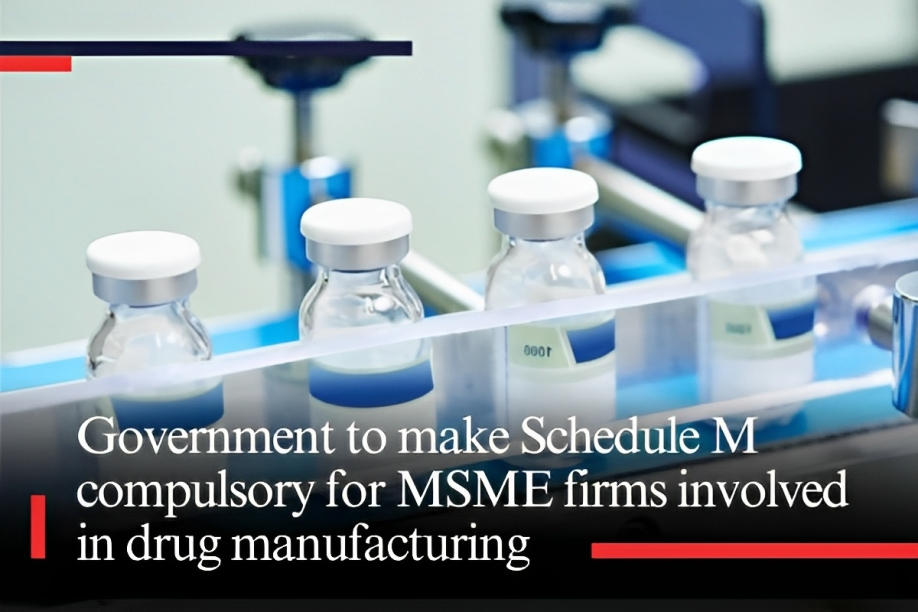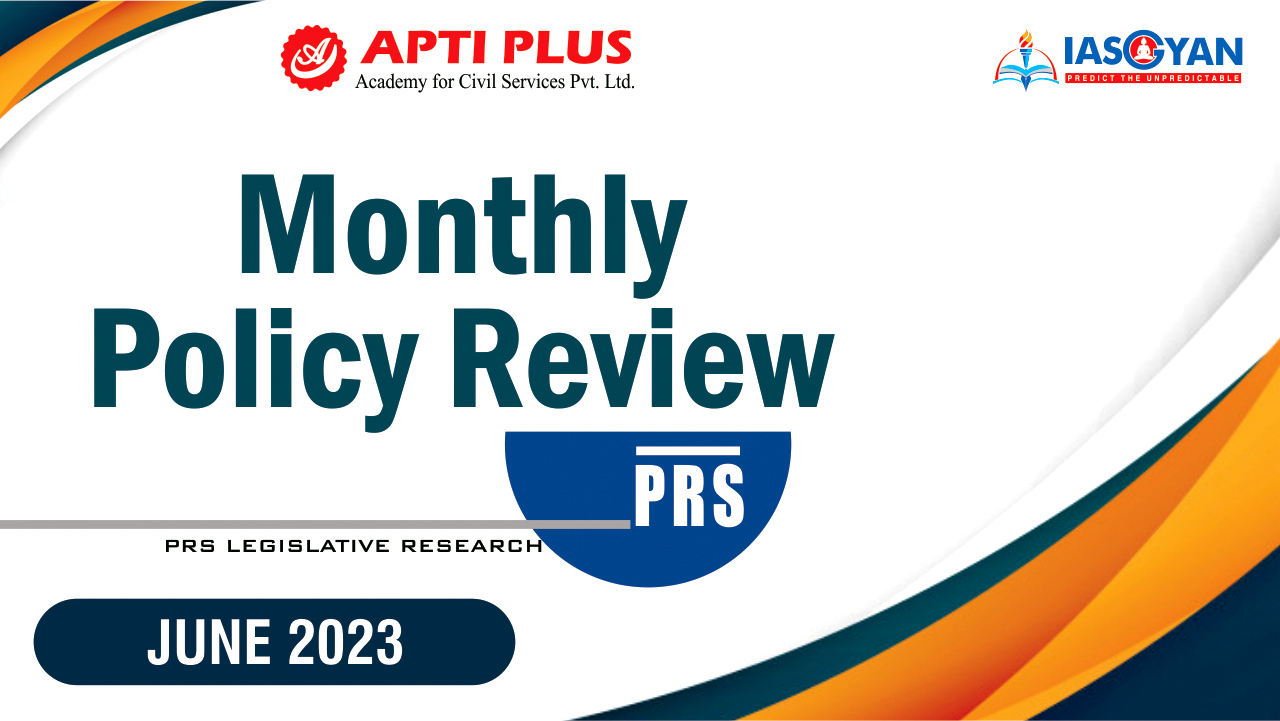Description

Copyright infringement not intended
Context: The Union Minister of Chemicals and Fertilizers Mansukh Mandaviya announced a major policy decision that will affect the MSME pharma sector in the country. He said that the government will soon make Schedule M compliance mandatory for all MSME pharma firms, which will ensure that they follow the minimum standards of quality, safety and efficacy for their products.
Details
- The Union Minister of Chemicals and Fertilizers has issued a directive to the regulatory authorities to conduct risk-based inspections and audits of manufacturing plants to ensure the quality of pharma products. He said that this would help in preventing substandard or counterfeit drugs from entering the market and harming consumers.
- He announced that Schedule M, which specifies the minimum requirements for good manufacturing practices, shall be made mandatory for the MSME pharma sector in a phased manner. He said that this would help in improving the compliance and competitiveness of the sector and boost its exports.
.jpg)
Schedule M
About
- Schedule M is a section of the Drugs and Cosmetics Act of 1940 that outlines the ‘Good Manufacturing Practices’ (GMP) for pharmaceuticals in India. These are the standards that pharmaceutical manufacturers must adhere to to ensure the quality, safety and efficacy of their products.
- Recently, the Ministry of Health and Family Welfare conducted a quality control drive across the country and inspected 137 firms. As a result, 105 firms faced regulatory action for violating GMP norms.
Background
- The origin of Schedule M can be traced to the recommendations of the Hathi Committee, which was set up in 1975 to review the drug policy in India. The committee suggested that GMP should be made mandatory for all drug manufacturers and that a separate schedule should be added to the Drugs and Cosmetics Act for this purpose.
- Schedule M was revised to align with the international guidelines of the World Health Organization (WHO).
Features of Schedule M
- It covers various aspects of manufacturing such as premises, equipment, personnel, raw materials, documentation, quality control, storage, distribution and recall.
- It specifies the minimum requirements for different categories of drugs such as sterile products, biological products, oral solids, oral liquids, topical preparations and so on.
- It provides guidelines for validation, calibration, maintenance, cleaning and sanitation of the facilities and equipment.
- It emphasizes the importance of training, hygiene and personal protective equipment for the staff involved in manufacturing.
- It mandates the preparation and maintenance of various records and reports such as batch records, standard operating procedures, quality control reports, stability studies and distribution records.
Types
Schedule M- 1
- Schedule M- 1 is titled “Good Manufacturing Practices and Requirements of Premises, Plant and Equipment for Homoeopathic Medicines”.
- This schedule outlines the GMP requirements for the premises where homoeopathic medicines are manufactured. It covers aspects such as building construction, ventilation systems, waste disposal, quality control procedures and documentation for homoeopathic medicines.
- The schedule also specifies the minimum equipment and facilities required for different sections of the manufacturing process, such as potentiation, container filling, lotions preparation, ophthalmic products preparation and so on.
Schedule M- 2
- Schedule M- 2 is titled “Requirements of Factory Premises for Manufacture of Cosmetics”.
- This schedule outlines the GMP requirements for the premises where cosmetic products are manufactured. It covers aspects such as building construction, equipment maintenance, basic sanitation and hygiene for cosmetic products.
- The schedule also specifies the minimum equipment and facilities required for different sections of the manufacturing process, such as creams production, nail polish production, lipstick production, hair dyes production and powders production.
Schedule M- 3
- Schedule M- 3 is titled “Quality Management System –For Notified Medical Devices And In-Vitro Diagnostics”.
- This schedule outlines the GMP requirements for the premises where notified medical devices and in-vitro diagnostics are manufactured.
- It covers aspects such as building construction, equipment validation, design and development validation, record keeping and traceability for medical devices and diagnostic products.
Significance
- It ensures that the pharmaceutical products manufactured in India meet the national and international standards of quality, safety and efficacy.
- It protects consumers from substandard, spurious, adulterated or misbranded drugs that may pose health risks or cause adverse reactions.
- It enhances the credibility and reputation of the Indian pharmaceutical industry in the global market and facilitates its exports and trade.
- It promotes the development and innovation of new drugs and technologies in the pharmaceutical sector.
Challenges
- Implementation and enforcement of Schedule M are not uniform across the country due to a lack of adequate infrastructure, manpower and resources.
- Compliance with Schedule M is costly and time-consuming for small and medium-scale manufacturers who may lack the technical expertise and financial capacity to meet the requirements.
- Awareness and education about Schedule M among the stakeholders such as manufacturers, distributors, retailers and consumers is low or inadequate.
- Harmonization of Schedule M with other regulatory frameworks such as WHO-GMP, US-FDA or EU-GMP is not complete or consistent.
Way forward
- The government should strengthen the regulatory authorities such as Central Drugs Standard Control Organization (CDSCO) and State Drug Control Authorities (SDCA) by providing them with more funds, staff and equipment to monitor and inspect the manufacturing units.
- The government should provide incentives and subsidies to small and medium-scale manufacturers to upgrade their facilities and equipment and adopt good manufacturing practices.
- The government should conduct regular training programs and workshops for the manufacturers, distributors, retailers and consumers to increase their knowledge and awareness about Schedule M and its benefits.
- The government should collaborate with other countries and international organizations to harmonize Schedule M with other regulatory frameworks and adopt best practices from them.
Must-Read Articles:
Strengthening of Pharmaceutical Industry: https://www.iasgyan.in/daily-current-affairs/strengthening-of-pharmaceutical-industry-spi-scheme
India’s Health Diplomacy and India’s Pharma Sector: https://www.iasgyan.in/daily-current-affairs/indias-health-diplomacy-and-indias-pharma-sector
|
PRACTICE QUESTION
Q. The Indian pharma industry is one of the largest and most competitive in the world, but it also faces many challenges and concerns at the international level. How can the industry overcome these issues and maintain its growth and reputation in the global market? What are the main reasons for the concern and what are the possible solutions?
|

https://epaper.thehindu.com/ccidist-ws/th/th_delhi/issues/43274/OPS/GU3BFL1PA.1.png?cropFromPage=true














